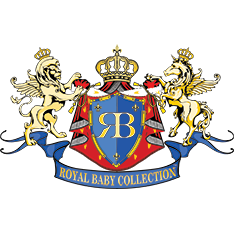Many people think that you can tell a horse’s age by its teeth. This isn’t quite true. Horse’s teeth aren’t like the rings of a tree that show each year’s growth. Telling a horse’s age by its teeth is not 100 percent accurate, but it will give you an approximate range if you don’t know the horse’s actual date of birth. The younger the horse, the closer the teeth will match its real age. As horses age, many factors can affect the condition of the teeth and make it more difficult to estimate age. Things like basic maintenance, diet, grazing conditions, vices, and genetics all play a role in how the horse’s teeth themselves are aging.
Baby Horse Teeth
Foals get their first milk or deciduous teeth shortly after birth. The final milk teeth are grown in by the time the foal is about nine months old. The first permanent teeth begin to grow in when the horse is between two and three years old. It’s not unusual for a horse owner to find a shed tooth in a feeder or on the ground. The milk teeth are shed gradually, and all of the permanent teeth are grown in by around age five. Milk teeth are paler in color and shorter than permanent teeth.
Adult Horse Teeth
The eruption times of the upper central incisor (2.5 years), upper middle incisor (3.5 years) and upper corner incisor (4.5 years) for horses under 5 years of age is considered fairly accurate in determining a horses age. 1
The new permanent teeth are quite concave on their surfaces and these “cups” along with the angle, shape and a groove on the outer vertical surface of the upper corner incisor (UCI) that gradually grows out, called Galvayne’s groove, are the indicators of how old a horse might be.
A “hook” located on the rear end of the UCI is often visible at age 6-7 years, and then again at age 11-13 years. Due to this variability in occurrence, it is not considered definitive in determining a horses age. 2
As the horse wears its teeth by grazing, the concave surfaces are worn flatter. By the time a horse is about 11 years old, it will have worn its teeth flat. How quickly this happens depends on the type of grazing it has available. Horses that graze grass on the sandy ground will wear their teeth flatter than those fed only hay grown on clay type soil.
At about age 10, the Galvayne’s groove begins to appear at the gum line. This groove will continue to grow out so that reaches the entire length of the tooth. By about age 15, the groove will reach half-way down the tooth, and it will reach all the way down the tooth by age 19-20 years. By the time a horse is in its mid-20s the Galvayne’s groove begins to disappear from the gum line, and if the horse lives long enough, will disappear completely as the tooth naturally wears away.
Senior Horse Teeth
As the horse ages, the angle of the teeth increases. The milk teeth are short and straight as are the newly erupted permanent teeth but as the horse ages, the teeth become more angled and the UCI becomes more tall than wide. This is where the saying “long in the tooth” comes from, because as the angle increases, so does that length from the gum line to chewing surface. The teeth also change in shape from oval to more angular as the horse ages. The color of the teeth will probably be quite yellowed and stained. At some point after their late 20s, a horse may start losing teeth. Horse’s teeth don’t grow for their whole lives but have a lifespan of their own. A domestic horse may outlive the lifespan of its teeth. As the horse loses more teeth, its health may suffer. It may be less able to chew tougher hays and grasses and require a diet tailored for older horses.
Extra Horse Teeth
Some horses may grow wolf teeth and tushes or canines. These are extra teeth that grow in the toothless bar of the horse’s mouth between the front teeth and back. Sometimes these teeth may have to be removed if they interfere with the bit or cause discomfort for the horse. These teeth usually come in by the time the horse is five years of age. Some horses will not have them at all, or for some, they may not be a problem.
Care of Horse Teeth
Because horse’s teeth grow throughout most of their lifespan and may not wear evenly, your horse will need to be checked by a veterinarian or equine dentist about once per year. Your horse may need to be floated, removing by filing any sharp edges or hooks that will prevent him from chewing properly and holding a bit or wearing a hackamore comfortably.
Detailed Diagrams and Explanations of Horse Teeth
While this is a general description of aging horses by their teeth several university agricultural extensions have detailed fact sheets with diagrams that show horse’s teeth at every stage of life. The PDF file from the University of Nevada Cooperative Extension is quite good and easy to print out so you can take it to the barn and compare pictures to actual teeth. The University of Missouri has a similar online resource with diagrams and explanations.
Original article: How to Tell a Horse’s Age by Its Teeth (thesprucepets.com)
www.royalequestriancollection.com – check our website to purchase and enjoy our products for your horses and you.





Add Comment